Search

Publications
Pashinyan’s visit to Iran: political disagreements against the background of economic rapproche-ment

Immediately after the trilateral meeting of the leaders of Russia, Azerbaijan and Armenia in Sochi, Nikol Pashinyan arrived to Teheran with an official visit, and had a series of meetings with the leaders of the Islamic Republic of Iran (IRI). The economic relations of the two countries continue to develop being the foundation for bilateral cooperation. At the same time, from the political standpoint, the parties have both common positions and serious disagreements, including the prospects of settlement of the situation in the South Caucasus.
Political cleavage
According to the official announcement, the visit of Armenian Premier to Iran was caused by the need to deepen the bilateral relations, to review the progress in joint projects implementation and to discuss the cross-border cooperation issues. [1] The statements of both parties in the course of the visit were to a great extent focused on the international agenda. No breakthrough solutions or really new initiatives were mentioned. It was rather a «protocol visit», as the media usually call it, even though Pashinyan due to his domestic and foreign policy situation wanted to demonstrate a «special» character of Armenian-Iranian relations. Especially because many analysts and experts estimated the outcome of the trilateral summit in Sochi as a failure for Armenia and a diplomatic defeat of Yerevan.
Before this visit, Hossein Amir-Abdollahian, the Iranian Foreign Affairs Minister, went to Armenia to open the IRI consulate in the city of Kapan, the administrative center of Syunik province, on September 21. Ararat Mirzoyan, his Armenian counterparty, announced in the course of the ceremony that Yerevan had an intention to open the consulate-general in the Iranian city of Tabriz. These diplomatic initiatives prove that the parties are focused on deepening the bilateral relations. The head of the Iranian Ministry of Foreign Affairs also spoke about developing the long-term bilateral cooperation Road Map.
One of the topic of political dialogue between the two countries are the remaining concerns of Iran associated with the strengthening positions of Azerbaijan in the South Caucasus and its close ties with Turkey. In this context, Yerevan found some areas of common interest with Teheran, for example, both parties express their criticism of Zangezur corridor. However, it does not look there is a possibility to oppose this project in the long-term horizon. The objective of creating this route is not only supported by Baku and Ankara, it is included in the Trilateral Statement dated 10 November 2020. This project in the current geopolitical situation is beneficial for Western countries as well, including the EU, [2] and for Russia.
Iran signaled not just once that in the context of strict sanctions it was not willing to lose Armenia as one of the ways to overcome isolation from the West. On the other hand, Baku never claimed that wanted to put an end to bilateral trade between Teheran and Yerevan. Zangezur corridor does not constitute a formal barrier for Iranian contacts with Armenia. Due to this, probably, Iran does not really want to block this project, but to mark some «red lines» creating the reason for bargaining and to provide for its own interests.
The value of Azerbaijan for Iran’s objective to overcome the isolation is no less than the value of Armenia. Thus, the majority of transit cargos to the IRI goes through Russia, and Teheran places special hopes on trading with the RF, and the transit is through the territory of Azerbaijan. This is also the key route for the North-South International Transport Corridor, while Armenia is more an alternative option. Due to this, after a certain «high emotions» period in the relations with Baku, Teheran seems to return to its traditional practice of equal arm’s length approach to its relations with Azerbaijan and Armenia.
The approaches of Teheran and Yerevan to settling the regional issues do not always coincide. The main disagreement, which was confirmed in the course of the recent visit of Nikol Pashinyan, is the attitude of the IRI to foreign actors’ participation. Iran is strongly against the engagement of any non-regional players into the settlement process. Armenia has a different opinion; it invited the EU mission to monitor the situation at the Armenian-Azerbaijanian border. [3] The Western «observers» (many of them are intelligence officers working under diplomatic cover) in the neighbor country – this is a situation Iran will be always strongly opposed to. The ideas voiced by Yerevan to engage the USA in settling the conflict between Armenia and Azerbaijan are even more negatively perceived by Teheran.
According to the words of Ebrahim Raisi, the IRI President, during the meeting with Nikol Pashinyan, «Settlement of national issues should be on the agenda of the regional countries only. Foreign interference will just exacerbate the problems of the South Caucasus. It is more than a specific signal for Yerevan, which is ready to pull all possible forces into the region (the European Union, OECD, the USA, France), in an attempt to «have good fishing in troubled water». Quite justifiably, Teheran is concerned that after the «observers» of the EU the Western «peace-makers» may appear, which will legitimize the military presence of the West in the South Caucasus.
The economic basis
The economic interaction still is the main basis for cooperation of Armenia and Iran. This remains vitally important for Yerevan, because Teheran belongs to the top three leading partners. Noticeable development is observed along these lines over the recent years. Thus, based on 2021 results, the bilateral trade turnover grew by 25% and made slightly over USD 500 mln. [4] Moreover, in H1 2022, the turnover demonstrated similar dynamics and grew by 33%. [5]
Of course, the statement of President Ebrahim Raisi summarizing the results of his meeting with Pashinyan about the intent to increase the turnover up to USD 3 bn obviously looks overestimated. However, in general the positive trade dynamics is evident.
At the same time, the trade balance maintains tremendous overbalance in favor of exporting goods from Iran to Armenia. In 2021, it accounted for almost USD 438 mln, while as the export from Armenia to the Islamic Republic accounted only for USD 65 mln. Moreover, imports from Armenia tend to decrease in Iran. [6]
One of the main drivers of the growing trade between the two countries is the decision to establish a temporary free trade zone between Iran and the Eurasian Economic Union (EAEU), which came into effect in October 2019. There is a good chance that by the end of 2022 this agreement may turn from a temporary one into a full-fledged one. [7] This document stipulates for the reduction of tariffs for a series of commodities that the parties are trading.
Using Yerevan as «a window to the EAEU» is in line with Teheran’s strategy of sourcing all the possible routes to access global markets. In this vein, Iran is interested not only in trading with Armenia, but more in transit opportunities for commodities through this country. This role is to a great extent satisfactory for the Armenian side as well, which claims its intentions to ramp-up the export to other countries going through its territory. [8]
The only major bilateral project at the government level is exporting Iranian gas in exchange for electricity. Soon after Pashinyan’s visit, Teheran and Yerevan signed the agreement for doubling barter gas supplies to Armenia from 1 mcm to 2 mcm.
In general, Yerevan and Teheran continue the course for mutually beneficial bilateral cooperation based mainly on interaction in trade and economic spheres. At the same time, the stage of political rapprochement of the two countries is giving way to the previous policy of Iran striving for the balanced and equidistant course between Armenia and Azerbaijan.
1. Iran wants to resolve the issues in the South Caucasus without any external forces’ interference. Nezavisimaya Gazeta, 01.11.2022.
2. Armenia Must Build the Zangezur Corridor. National Interest, 20.09.2022.
3. The EU to send observers to the border areas of Armenia. Deutsche Welle, 17.10.2022.
4. External trade of Armenian Republic by countries. Eurasian Economic Commission.
5. Strange numbers: the Armenian-Iranian trade grew by 33%, but the cargo carriage volume did not change. Sputnik Armenia, 28.07.2022.
6. External trade of Armenian Republic by countries. Eurasian Economic Commission.
7. Russia and Iran agreed to sign the EAEU Free Trade Zone Agreement soon. TASS, 01.11.2022.
8. Iran, Armenia to Pursue Joint Exports to Third Countries. Financial Tribune, 04.11.2022.







